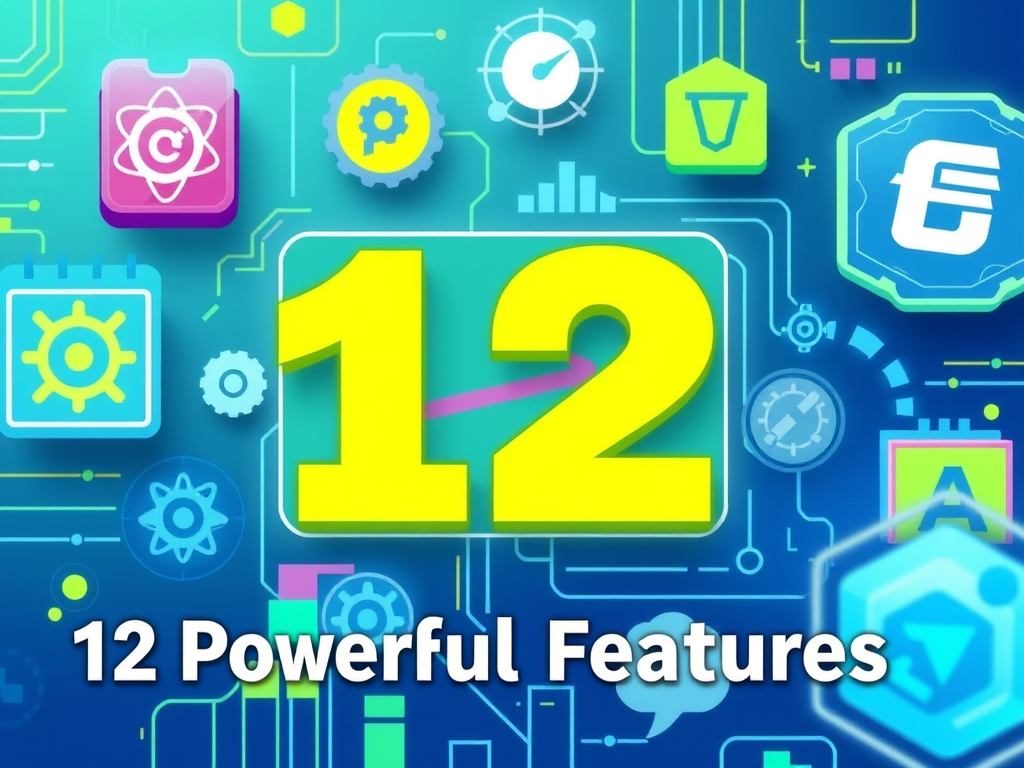Complete Guide: Migrating from Drupal 7 to Drupal 11
With Drupal 7’s end of life approaching on January 5, 2025, now is the critical time to plan your migration to Drupal 11. This comprehensive guide walks you through each step of the migration process, helping you avoid common pitfalls and ensure a smooth transition.
Introduction
Drupal 7 has been a trustworthy platform for many organizations for over a decade, but its end of life is rapidly approaching. After January 5, 2025, Drupal 7 will no longer receive security updates or bug fixes, leaving websites vulnerable to security threats and compliance issues. Migrating to Drupal 11 (released in August 2024) not only resolves these security concerns but also provides access to modern features, improved performance, and better user experience.
It’s important to understand that migrating from Drupal 7 to Drupal 11 is not a simple upgrade but rather a complete rebuild due to fundamental architectural changes. This guide will help you navigate this complex process step by step.
Prerequisites
Before beginning your migration, ensure your environment meets these Drupal 11 requirements:
- PHP: Version 8.3 with zlib extension enabled
- Web Server: Apache 2.4.7+, Nginx 1.1+, or any web server with proper PHP support
- Database: Compatible with MariaDB/MySQL (specific versions supported by Drupal 11)
- Memory: Minimum 1GB RAM for Composer (more recommended for complex sites)
- Tools: Drush 13, Composer
Step 1: Comprehensive Site Analysis
Timeline: 1-2 weeks
Begin with a thorough inventory of your Drupal 7 site to understand its structure and complexity:
- Document content types: List all content types and their field structures
- Catalog modules: Identify all contributed and custom modules
- Analyze theme: Document theme structure and customizations
- Map user roles and permissions: Detail all user roles and their access rights
- Identify integrations: List all third-party integrations and APIs
Tools to use:
# For generating a comprehensive site audit
drush @yoursitealias pm-list --format=csv > modules.csv
drush @yoursitealias sql-query "SELECT type, COUNT(*) FROM node GROUP BY type" > content_types_count.csv
Alternatively, if you have the Devel module enabled, you can use the data collection tool to extract necessary information for estimating migration costs.
Step 2: Set Up Development Environment
Timeline: 2-3 days
-
Install local development environment:
- Set up DDEV, Lando, or another local development tool
- Install appropriate PHP version (8.3+)
-
Create a fresh Drupal 11 installation:
composer create-project drupal/recommended-project my_drupal11_site cd my_drupal11_site composer require drush/drush -
Configure database connections:
- Set up the database for your new Drupal 11 site
- Prepare access to your Drupal 7 database for migration
-
Update settings.php to include the Drupal 7 database connection:
$databases['migrate']['default'] = [ 'database' => 'drupal7_db', 'username' => 'username', 'password' => 'password', 'prefix' => '', 'host' => 'localhost', 'port' => '3306', 'namespace' => 'Drupal\\mysql\\Driver\\Database\\mysql', 'driver' => 'mysql', ];
Step 3: Enable Migration Modules
Timeline: 1 day
Enable the core migration modules required for the migration process:
drush en migrate migrate_drupal migrate_drupal_ui -y
For more complex migrations, consider additional contributed modules:
composer require drupal/migrate_plus drupal/migrate_tools drupal/migrate_upgrade
drush en migrate_plus migrate_tools migrate_upgrade -y
Step 4: Module Compatibility Assessment
Timeline: 1-2 weeks
-
Analyze module compatibility:
- Install the Upgrade Status module:
composer require drupal/upgrade_status drush en upgrade_status -y - Visit
/admin/reports/upgrade-statusto check module compatibility
- Install the Upgrade Status module:
-
Create a migration plan for each module:
- Identify direct replacements for Drupal 7 modules
- Find alternative modules for deprecated functionality
- Plan custom development for unsupported features
-
Install required modules on Drupal 11:
composer require drupal/[module_name] drush en [module_name] -y
Step 5: Run Migration Assessment
Timeline: 1-2 days
-
Run migration assessment using Drupal UI:
- Navigate to
/upgradein your Drupal 11 site - Select your Drupal 7 database
- Review the assessment report for potential issues
- Navigate to
-
Address identified issues:
- Resolve content type field incompatibilities
- Adjust database structure as needed
- Prepare custom migration scripts for complex content
Step 6: Create Migration Configuration Files
Timeline: 1-3 weeks (depending on complexity)
For complex migrations, create custom migration YAML files to handle specific content types:
-
Create custom migration files for each content type:
# Example: article_migration.yml id: article_migration label: 'Article migration from Drupal 7' migration_group: custom source: plugin: d7_node node_type: article destination: plugin: entity:node process: type: plugin: default_value default_value: article title: title # Map other fields accordingly migration_dependencies: required: - user_migration - Create migration files for taxonomy, users, files, and other entities
- Configure field mappings for each content type
Step 7: Execute Migration
Timeline: 1-2 weeks
-
Run the basic migration using the UI or Drush:
# Using Drush drush migrate:import --all # Or for specific migration drush migrate:import article_migration -
Monitor the migration for errors:
drush migrate:status -
Address issues as they arise:
# Reset a specific migration to try again drush migrate:reset article_migration -
Validate migrated content by comparing counts and sampling content:
drush sql-query "SELECT type, COUNT(*) FROM node GROUP BY type"
Step 8: Theme Development
Timeline: 2-4 weeks
Drupal 11 uses the Twig templating engine, which is significantly different from Drupal 7’s PHPTemplate system:
- Choose a base theme (e.g., Olivero, Claro, or Bootstrap)
-
Create a custom theme:
# Create theme directory mkdir -p themes/custom/your_theme_name -
Set up theme files:
- Create
your_theme_name.info.yml - Develop Twig templates
- Implement CSS and JavaScript
- Create
- Recreate the look and feel of your Drupal 7 site using modern techniques
Step 9: Custom Code Migration
Timeline: 2-4 weeks
-
Use Drupal Rector to assist with code updates:
composer require palantirnet/drupal-rector --dev -
Rewrite custom modules to use Drupal 11’s API:
- Convert hooks to services and plugins
- Implement dependency injection
- Use OOP principles
- Update custom field types, entities, and other custom code
Step 10: Test and Quality Assurance
Timeline: 2-3 weeks
-
Perform functional testing:
- Verify all content migrated correctly
- Test all user workflows
- Check responsive design and mobile compatibility
-
Run automated tests:
# Run PHPUnit tests ./vendor/bin/phpunit # Check code quality composer require drupal/coder --dev ./vendor/bin/phpcs --standard=Drupal modules/custom -
Conduct security audits:
- Use the Security Review module
- Check for vulnerabilities and best practices
- Perform load testing to ensure the site handles traffic efficiently
Step 11: Prepare for Launch
Timeline: 1-2 weeks
-
Create a deployment plan:
- Document all steps needed for the production migration
- Prepare database migrations
- Create file transfer procedures
-
Set up the production environment:
- Configure production server with PHP 8.3+
- Set up caching and optimization
- Install SSL certificates
-
Create backup strategies:
- Full database backups
- File system backups
- Configuration exports
Step 12: Launch and Monitor
Timeline: 1 week
-
Perform the production migration:
- Follow the deployment plan
- Migrate content and files
- Configure production settings
-
Conduct final testing:
- Verify all features work in production
- Test user login and permissions
- Check third-party integrations
-
Monitor the site:
- Set up performance monitoring
- Configure error logging
- Implement security monitoring
Step 13: User Training and Documentation
Timeline: 1-2 weeks
-
Prepare user documentation:
- Create user manuals for content editors
- Document administrative processes
-
Conduct training sessions:
- Train content editors on the new interface
- Provide admin training for site managers
- Establish support channels for user questions and issues
Common Challenges and Solutions
Challenge 1: Complex Content Structures
Solution:
- Map out all field relationships before migration
- Use custom migration scripts for complex content types
- Consider a phased approach for particularly complex structures
Challenge 2: Module Compatibility
Solution:
- Conduct early module compatibility assessment
- Identify alternative modules for unsupported functionality
- Allocate budget for custom module development if needed
Challenge 3: Theme Redesign
Solution:
- Use the migration as an opportunity to modernize your design
- Leverage Drupal 11’s improved theming system
- Consider hiring a front-end specialist if internal resources are limited
Challenge 4: Custom Code Migration
Solution:
- Utilize tools like Drupal Rector to identify deprecated code
- Rewrite custom modules using modern PHP practices
- Break the migration into manageable components
Benefits of Drupal 11
After completing your migration, you’ll enjoy numerous advantages:
- Enhanced Security: Regular security updates and modern security practices
- Improved Performance: Better caching and optimization
- Modern Interface: Improved admin experience with the new admin theme
- Mobile Compatibility: Responsive design out of the box
- Future-Proofing: Support until at least 2026, with easier upgrades to future versions
Conclusion
Migrating from Drupal 7 to Drupal 11 is a significant undertaking, but with proper planning and execution, it offers substantial benefits for your organization. The process not only ensures continued security and functionality but also provides an opportunity to modernize your digital presence and take advantage of Drupal’s latest features.
Begin your migration planning today to ensure a smooth transition before Drupal 7’s end of life in January 2025. With this guide, you’re well-equipped to navigate the complexities of migration and emerge with a stronger, more capable web platform.
Need help with your Drupal migration? Contact our team of Drupal experts who can assist with every aspect of your migration journey, from planning to execution and post-launch support.






Leave a Reply